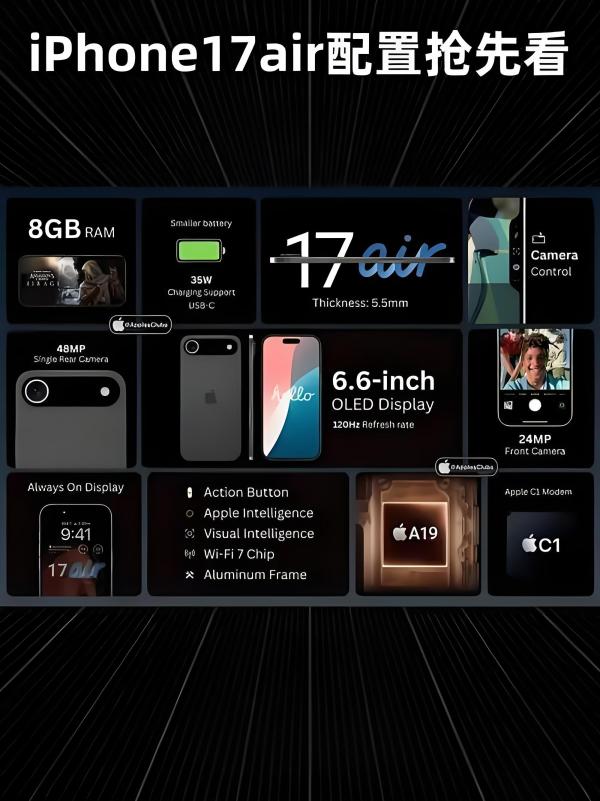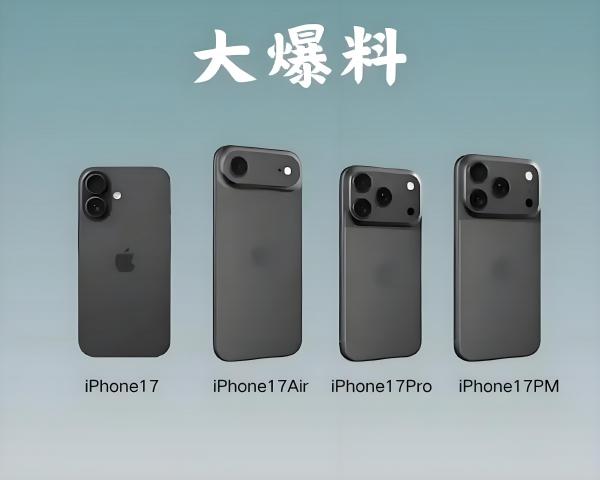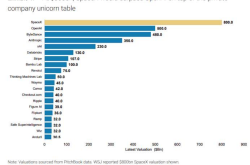iPhone 17 Air Preview: Sleek, Dynamic, but Are You Ready for These Compromises?
![]() 06/02 2025
06/02 2025
![]() 804
804
The fiercely competitive smartphone market of 2025 gears up for another milestone as Apple, the tech juggernaut, prepares to unveil the eagerly anticipated iPhone 17 Air. Boasting an ultra-slim profile, unparalleled performance, and groundbreaking features, this device is poised to steal the spotlight in the premium segment. Set to debut alongside the iPhone 17 series in September 2025, the iPhone 17 Air promises to be Apple's slimmest smartphone yet, capturing the imagination of tech enthusiasts worldwide. Let's delve deeper into this alluring device!

First and foremost, the iPhone 17 Air's ultra-slim design is its defining trait, with a thickness ranging from 5.5mm to 5.65mm. This makes it notably thinner than the iPhone 16 Pro Max (8.25mm) and even the Samsung Galaxy S25 Edge (5.84mm). This svelte form factor elevates portability to new heights, weighing in at approximately 145 grams—just a tad heavier than the iPhone 13 mini (141 grams), offering a virtually weightless feel. The chassis could employ an aerospace-grade aluminum alloy or titanium alloy frame, paired with a glass or ceramic back panel, ensuring robustness without compromising on aesthetics. The back may feature a matte finish to minimize fingerprint smudges, adding to its premium appeal. Color options are expected to include classic black and white, along with vibrant hues like the culturally inspired Silk Road Dunhuang, catering to diverse tastes. With IP68 water and dust resistance, the phone can withstand accidental spills and dusty environments, providing added peace of mind for outdoor users. The ultra-narrow bezels further enhance the screen-to-body ratio, delivering an immersive visual experience. However, the ultra-slim design also raises durability concerns, such as susceptibility to bending, which will need to be validated through real-world testing.
The display of the iPhone 17 Air is another standout feature, boasting a 6.6-inch LTPO OLED screen with a resolution of approximately 1440x3088 pixels. This offers high pixel density, exceptional display quality, vibrant colors, and is ideal for HDR content. The screen supports a 120Hz ProMotion adaptive refresh rate, dynamically adjusting from 1Hz to 120Hz based on usage, ensuring buttery smooth scrolling, animations, and gaming. This marks Apple's first foray into bringing ProMotion technology to non-Pro models, elevating the mid-range experience. High-frequency PWM dimming technology mitigates visual fatigue from prolonged use, making it ideal for binge-watching, social media scrolling, and gaming. With bezels as narrow as 1.2mm and a screen-to-body ratio of up to 95%, the display offers an ultra-immersive experience. Protected by the latest Corning Gorilla Glass, it enhances durability against drops and scratches, adding to its reliability. The screen size strikes a balance between the standard iPhone 17 (6.1 inches) and the iPhone 17 Pro Max (6.9 inches), offering a large-screen experience without compromising portability, making it suitable for one-handed use.
In terms of photography, the iPhone 17 Air might feature a single rear 50MP main camera, rumored to use the same high-quality sensor as the iPhone 17 Pro. Equipped with a large sensor and Optical Image Stabilization (OIS), it captures brighter, more detailed images in low light. Apple's computational photography technologies, such as Night Mode, Deep Fusion, and Smart HDR, ensure outstanding photo and video quality, perfect for daily snapshots and social media sharing. The front camera has been upgraded to 24MP, a significant improvement over its predecessor, offering clearer selfies and video calls, ideal for Vlogging or live streaming. However, the single-camera setup may limit ultra-wide or telephoto capabilities, sparking debate among some users. While rumors suggest a possible triple-camera system, the ultra-slim design likely favors a single camera. Apple may mitigate hardware limitations with advanced AI algorithms and software optimizations, but actual performance will be verified upon release.

Under the hood, the iPhone 17 Air is expected to be powered by the A19 Bionic chip, manufactured using a 3nm process. This offers approximately 20% improvements in CPU and GPU performance with a 15% reduction in power consumption. Whether running resource-intensive games like Genshin Impact, editing 4K videos, or multitasking, the chip ensures a seamless experience while maintaining low temperatures. Coupled with LPDDR5X RAM and UFS 4.0 storage, app launch speeds and data transfer efficiencies are significantly enhanced. The chip supports the latest 5G standards for fast download and upload speeds, potentially including Wi-Fi 6E or Wi-Fi 7 for high-speed connectivity. Running iOS 19, the system features smoother animations, a 30% improvement in fluidity, enhanced background retention, and support for seamless switching between over 200 apps. iOS 19 also introduces more AI features, such as intelligent assistants and personalized recommendations, deeply integrating with the Apple ecosystem to boost productivity and user experience.
Battery life is often a concern with ultra-slim phones, and the iPhone 17 Air is rumored to have a battery capacity of 2800mAh, smaller than the iPhone 16 Pro's (around 3500mAh). This raises some endurance questions. However, Apple might adopt silicon-carbon battery technology to boost actual capacity by 15-20%. Combined with the A19 chip's high energy efficiency and iOS 19 optimizations, it's expected to support a day's typical use, including web browsing, video watching, or casual gaming. Heavy users may need to charge more frequently. Charging-wise, it supports 30W wired fast charging, fully charging in about 40 minutes, with 15W MagSafe wireless charging offering flexibility. While not as fast as some Android competitors, it suffices for daily needs. Actual battery performance will need real-world validation.
Functionality-wise, the iPhone 17 Air could be Apple's first model to adopt eSIM globally, doing away with the physical SIM card slot to optimize internal space. This aligns with industry digitization trends but may pose an adjustment for users accustomed to physical SIM cards. The Camera Control button offers quick access to the camera or custom shortcuts, and the Dynamic Island cutout retains interactive notification functionality, integrating the front camera and sensors. The stereo speakers support Dolby Atmos for immersive sound, though rumors suggest the ultra-slim design might limit it to a single speaker, affecting sound quality—an aspect requiring official confirmation. Full-featured NFC enhances the payment experience, and Face ID ensures secure unlocking.
In terms of pricing and positioning, the iPhone 17 Air is expected to start at around $900 (approximately RMB 6400), slotting between the standard iPhone 17 (around $800) and the iPhone 17 Pro (around $999), replacing the Plus model. This pricing strategy makes it an appealing choice for users prioritizing a large screen and high-end features within a budget. Target users include business professionals valuing portability, fashion-conscious young users, and tech enthusiasts. Compared to the Samsung Galaxy S26 (starting at around RMB 9000) and Xiaomi 16 (starting at around RMB 4500), the iPhone 17 Air stands out with its ultra-slim design and Apple ecosystem advantages.

In summary, the iPhone 17 Air epitomizes Apple's design and technological innovation with its ultra-slim profile, 120Hz ProMotion display, A19 Bionic chip, and robust photography capabilities. While the single camera and smaller battery capacity present trade-offs, Apple aims to balance performance and portability through advanced battery technology and software optimizations. As September 2025 approaches, the iPhone 17 Air is undoubtedly set to become a centerpiece in the smartphone market, generating excitement among tech enthusiasts worldwide!






